Do you find the famous Digitech Whammy pedal to be something of a mystery? Did you actually think it was a wah pedal? What about those other ones with the red boxes from Digitech?
What do they all do?
Today, I’ll go through each of them with you, and tell you what they are and what they do. Once they mists have cleared, you’ll understand just how fun you can have with a Whammy pedal in your life!
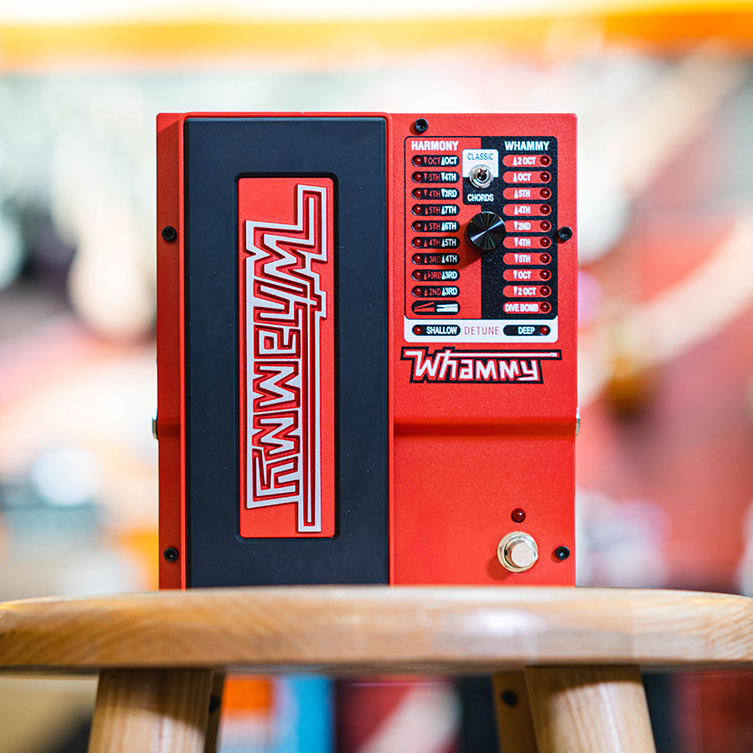
Whammy pedals are a special type of pitch shifter pedal. So, let us begin today with a clear understanding of what ‘pitch shifting’ means in guitar playing terms…
Contents
Does the Whammy Pedal Affect My Guitar Tone?
What is Pitch Shifting?
- Octave pedals, Harmonisers and Whammies are all types of pitch shifting
- Pitch shifting means the electronic manilutation of your guitar's pitch
- There is huge scope for sound creation with pitch effects
Pitch Shifting is an effect that manipulates the pitch of your guitar notes. It can be done in a number of ways. Some are octavers, and add additional notes an octave (or two) below the note you are playing, but keep to the same relative note: you play a C, you hear that C plus a C that’s an octave underneath, and so on. Some octave pedals such as the Electro-Harmonix Micro POG can offer a low active AND a high octave.
Some pitch shifters are termed as Harmonisers or Harmonizers. Harmonizers used to be extraordinarily expensive because it took a fair bit of computing to do what they did. Harmonisers provide extra notes in an intelligent way that change from interval to interval, depending on a key or scale. So, you could play two notes, for example, and the Harmoniser would give you additional notes that were a minor 3rd, say, and then a fifth. You tell it which key you are in and the pedal can supply correct extra notes that are relative to what you are playing, so that you can hear actual changing harmonies,not just simple octaves. It’s like an Iron Maiden guitar solo but there’s only you playing.
Then you get the Whammy pedal, which can do all of this stuff and more, plus it has a special trick up its sleeve…it can dramatically change pitches and intervals in real time as you play…
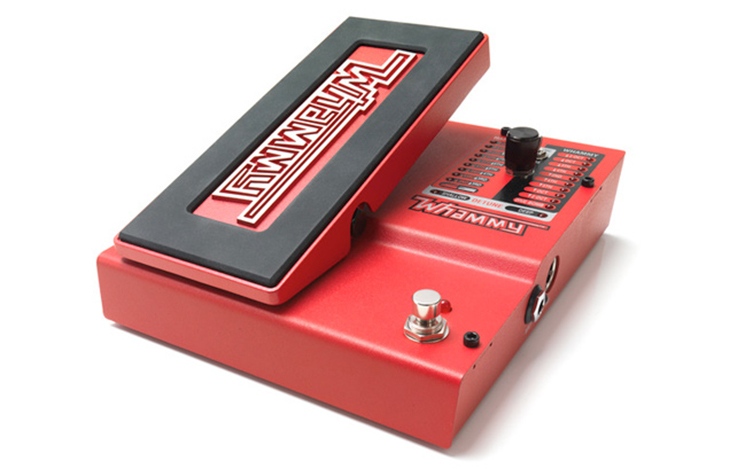
Digitech Whammy Pedal
- The OG Whammy pedal and other models with expression pedals built in
- Digitech are the only company who can use the 'Whammy' term

So what is a Whammy pedal? And what is a ‘whammy’ effect, even?
Okay. It’s a pitch shift pedal that is able to change parameters in real time, thanks to an onboard expression pedal and some (for its time) very advanced processing. The Whammy pedal has been around since 1989, believe it or not, and only Digitech are allowed to use the term ‘whammy’ with their pedals.
The Whammy effect is a real-time pitch shift. It can be set to change pitch up to two octaves above your guitar or two octaves below. These pitches are controllable in real time by moving the expression pedal. Have a listen to this, because this is much simpler than explaining:
You’ll have noticed that it replaces your note, it doesn’t just add something alongside it. That’s the real trick with the Whammy pedal that made it so famous in the beginning. You are literally bending your notes far beyond the capability of the instrument.
The whammy can also perform harmony duties, with settings that normally contain two distinct harmonies: you get one harmony with the expression pedal in the ‘heel’ position and the other when the pedal is in the ‘toe’ position, fully rocked forward.
In addition to all of those sounds, the Whammy also offers a Detune effect that’s like a rather lovely chorus effect, so there are a lot of features packed in there! Happily, it's very easy and intuitive to navigate. One control knob, one footswitch and the expression pedal is all you get on the regular Whammy, and it’s absolutely all you need.
Why is it Called Whammy?
The Whammy effect gets its name because a couple of the settings mimic the sound of somebody divebombing their guitar’s whammy bar (dropping the pitch dramatically). The Whammy does a lot more than that - and in fact it’s the high pitched stuff that is more frequently spoken of as the ‘whammy’ sound - but that’s where the name came from. So now you know!
The Whammy Pedals
As of 2025, we are actually 5 generations into the Whammy pedal, without counting extra models and special editions. Here’s a quick look at what’s currently available under the Whammy umbrella…
Digitech Whammy (version 5): the full-fat Whammy experience, in its 5th generation. It does everything explained above and is probably the most recognisable of all Whammy pedals.
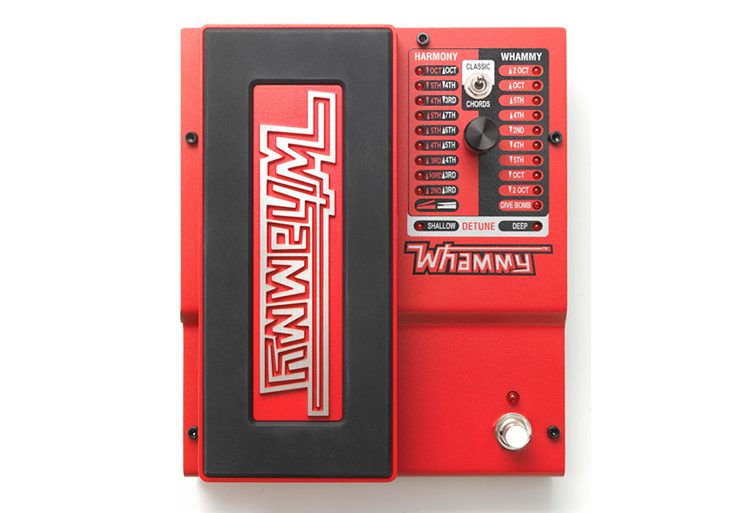
Digitech Whammy MonoNeon Special Edition: as you can see, this one has swapped the standard red livery for something altogether more acidic. This is a limited edition artist signature pedal for bassist MonoNeon, and contains extra presets including octaver blends and a 3 octave Hypersonic mode.
Digitech Whammy DT: The larger Whammy pedal, this contains a full Whammy and a full Drop pedal (see below).
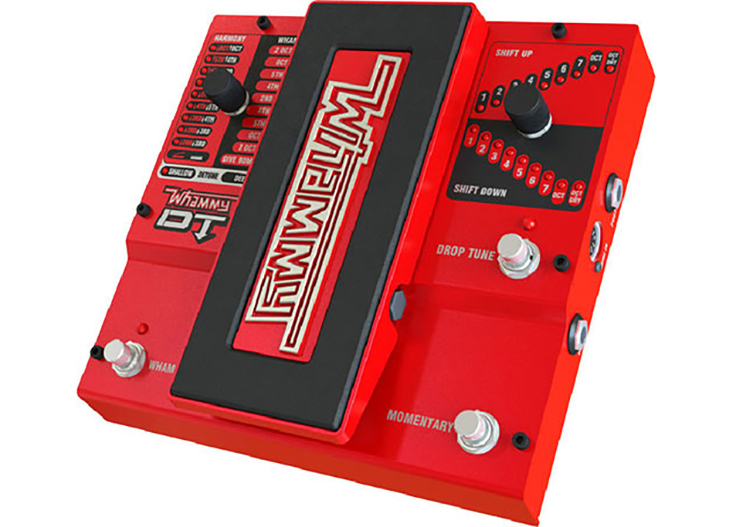
Digitech Bass Whammy: As you’d guess, this is calibrated for bass frequencies and offers all of the cool sounds that the guitar version has. It’s always blue in colour, too.
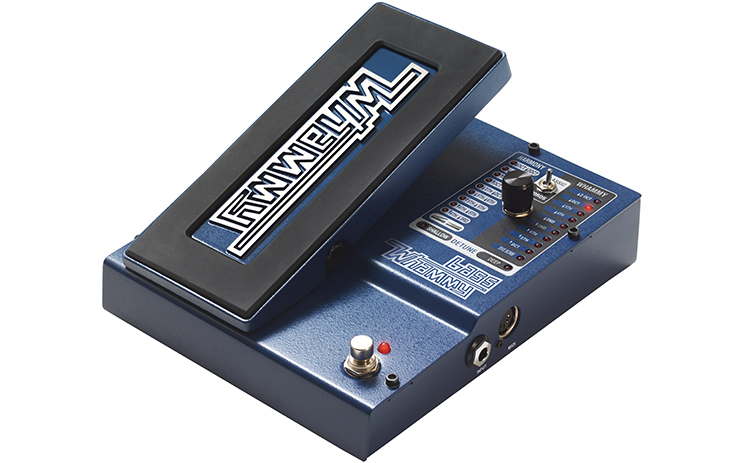
Check out this Tool song below to hear the Bass Whammy in action:
The Whammy Family
Those above pedals are the direct Whammy pedals, with treadle pedals to deliver the real-time pitch shifting. As we now know, Whammy pedals do more than just that, and Digitech have taken some of the other features and built dedicated pedals…
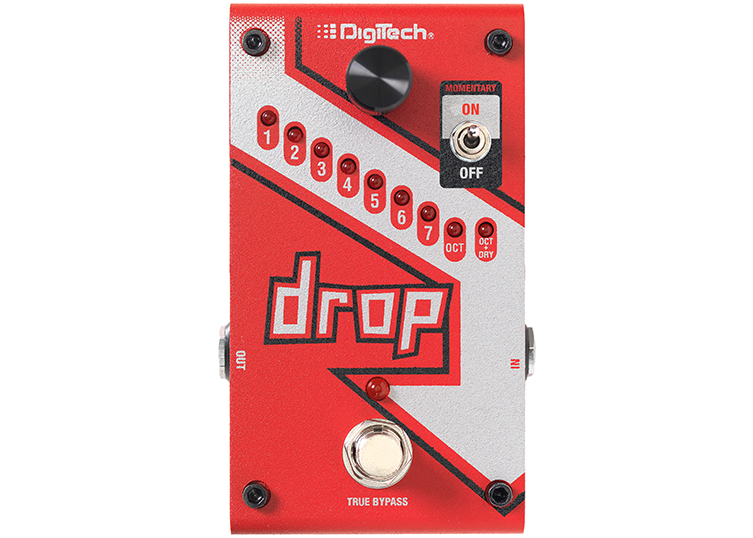
Digitech Drop: Change the pitch of your entire guitar semitone by semitone with no tracking problems and no glitches. Perfect for when you want to ‘go heavy’ without retuning or putting on heavier strings for drop tunings.
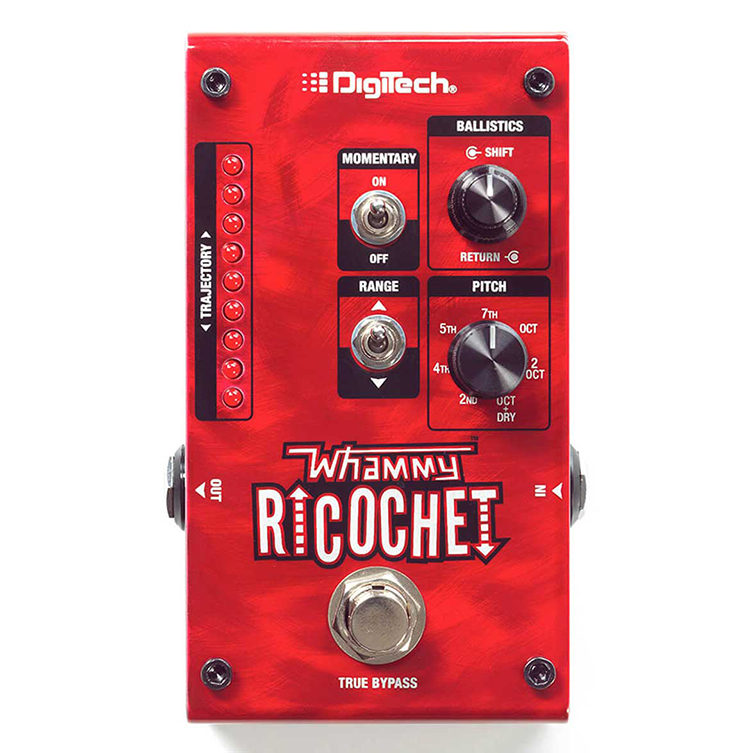
Digitech Whammy Ricochet: Whammy effects without the expression pedal. So, you can determine the final pitch and the speed of the change, then whether it’s momentary (hold down the pedal and it stays on; release the pedal and the effect is off) or not.
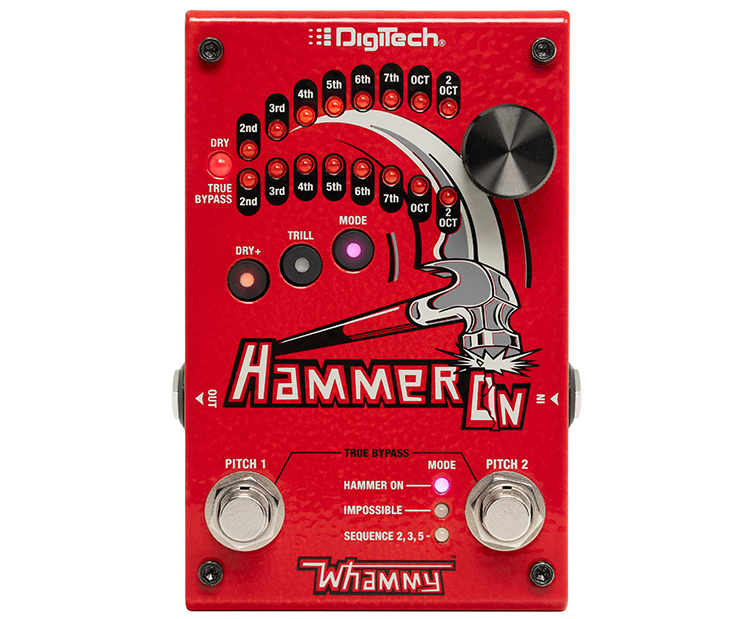
Digitech HammerOn: an inspired mixture of harmony, pitch shifting and sequencer-like note triggering that can be applied in a number of creative and musical ways.
Who Uses Whammy Pedals?
The list of famous users for the Whammy pedal is pretty huge, but here’s a condensed list for you…
- Tom Morello
- David Gilmour
- Jonny Greenwood
- Ed O’Brien
- Dimebag Darrell
- Matt Bellamy
- Vernon Reid
- Jack White
- James Iha
- Billy Howerdel
- Steve Vai
- Jennifer Batten
- Joe Satriani
- The Edge
- Justin Chancellor
- Nick Sadler
Tom Morello is perhaps the player most regarded as having put the Whammy pedal on the map for guitar players. His inventive use of pretty much every setting has proven instrumental (sorry) in him developing his unique voice on the guitar.
But there are many ways to use a Whammy pedal. Check out David Gilmour’s expressive playing on this Pink Floyd track for 1994’s Division Bell album for a whole different approach to it:
Does the Whammy Pedal Affect My Guitar Tone?
Does the Whammy pedal affect the guitar signal? Yes. Yes, it does a bit. Certainly, when the effect is switched on, you can hear a slight difference in both your tone and in a tiny bit of signal latency (how long from when you play a note to when the note sounds). You can also hear ‘tracking’ problems with earlier Whammy pedals, when playing more than one note at once, but those issues have largely been resolved in current generation pedals with 'Chord' modes.
But yes, it is a fact that you can hear a slight difference in your sound when you run a Whammy pedal. It’s minimal, though, and the creative benefits are so many that, overall, it’s worth it. Some people actually prefer the slighly grainy, janky sound that accompanies older Whammy technology as an artistic preference, too.
Try a Whammy Pedal
The great thing about the Whammy pedal in my opinion is that everybody approaches it differently. It’s a very obvious effect, but it’s not one with prescribed intentions accompanying it. You can use it in so many ways that it’s really more about your own personality and musical objectives than anything else.
If you are wondering which Whammy to buy, then I suggest trying out a couple at your local guitarguitar. Not every pedal in the family does all of the same things, so you’ll naturally find out what appeals to you by simply playing them. If in doubt, go for the Digitech Whammy pedal itself, because it is the blueprint upon which all others are both designed and measured.
Click to View our Digitech Whammy Pedals

